Ujjain is a historical city of Central India, located in the Malwa region of Madhya Pradesh. Bounded by the holy waters of the Shipra River, it is considered as one of the seven major sites of Hindu pilgrimage.Ujjain is situated on the right bank of River bank or River Shipra. It is a very holy city for the Hindus a site for the triennial Kumbh Mela. According to Hindu scriptures, it was originally called Avantika. There is an interesting tale behind the sanctity of the city. It's origin is ascribed to the mythological legend of Sagar Manthan (churning of the primordial ocean to discover the pot of nectar).The early history of Ujjain is lost in the midst of antiquity. As early as the time of the Aryan settlers, Ujjain seems to have acquired importance. By the 6th century B.C. Avanti with its capital at Ujjaini, is mentioned in Buddhist literature as one of the four great powers along with Vatsa, Kosala and Magadha. Ujjain lay on the main trade route between North India and Deccan going from Mathura via Ujjain to Mahismati (Maheshwar) on the Narmada, and on to Paithan on the Godavari, western Asia and the West.It was once ruled by emperors like Vikramaditya and Asoka while poet Kalidas wrote his poetry here. The mention of the city as a capital of the Avanti kingdom is also found in the Mahabharata.Since Ujjain is one of the oldest cities in it has been known by many names:
Avantika, Padmavati, Haranyavati, Kandakatringa, Kumudvati, Pratikalpa, Ujjayani, Udeni, Kushasthali, Bhagavati and Vishala.
How to reach here:
By Air: Devi Ahilyabai Holkar Airport in Indore is the nearest airport to Ujjain, which is situated 55 km away. Indore is air connected to major cities in India by public and private domestic airlines
By Rail: Ujjain Junction Railway Station is an important railway station in Western railway zone. It is well connected to all major railway stations in India.
Best time to visit: October to March.
Languages spoken: Hindi, English.
Must eat: Condensed Hot Almond Milk, Gulab Jamuns,Chakki ki Shaak .
Famous Restaurants: Sri Ganga, Status Hotel Imperial.
Places you must visit:
The Mahakaleshwar Temple is the most famous temple in the city of Ujjain. This temple of Lord Shiva is devoted to one of the twelve ‘Jyotirlingas’ in India. The temple is built in five levels and decorated with idols of deities like Omkareshwars Shiva, Parvati, Ganesh, Kartikeya and Shiva’s Bull – Nandi. The temple also has a towering ‘shikhara’.Its shikhara soaring into the skies, evokes primordial awe and reverence with its majesty. The Mahakal dominates the life of the city and its people, even in the midst of the busy routine of modern preoccupations, and provides an unbreakable link with past traditions. Bhasm Arti, one of the important ritual of this temple is a symbolic representation of Death and Life. This unusual sacrament that involves smearing the linga with hot ashes from the burning ghats is a mark of respect the Destroyer of the universe, Lord Shiva.
Mahakalam Lavanyam Madhura Karunarasa varithim |
Mahalingam Mangalaroopam Jyothir swaroopam sirasa namami||



Bade Ganeshji ka Mandir, an ancient temple located above the tank adjacent to the Mahakaleswar temple,enshrines a huge artistic sculpture of Ganesh, the son of Shiva. An idol of this size and beauty is rarely to be found.The center of the temple has an idol of the pancha-mukhi (five faced) Hanuman. There is also provision for learning astrology and Sanskrit in the temple.

The ancient temple of Chintaman Ganesh is built across the Shipra on the Fatehabad railway line. The Ganesh idol enshrined here is supposed to be swayambhu - born of itself. The temple itself is believed to be of considerable antiquity. Riddhi and Siddhi, the consorts of Ganesha, are seated on either side of Ganesha. The artistically carved pillars in the assembly hall date back to the Paramara period. Worshippers throng to this temple because the deity here is traditionally known as Chintaharan Ganesh meaning "the assurer of freedom from worldly anxieties".


Pir Matsyendranath is an extremely attractive spot on the banks of the Shipra quite close to the Bhartihari Caves and the Gadkalika Temple. It is dedicated to the memory of one of the great leaders of the Natha sect of Saivism-Matsyendranath. Since muslims as well as the followers of the Natha sect call their saints 'pir', the ancient site of Pir Matsyendranath is venerated by both. Excavations at this site have yielded some antiquities which date back to the 6th and 7th century BC.

The Bhartrihari Caves are situated on the bank of River Shipra, adjacent to the temple of Gadkalika. There is a traditional belief that at this very spot, Bhartrihari, who is known as the stepbrother of Vikramaditya, lived and meditated before forsaking worldly pleasures. He was also a great poet and scholar. Some of his famous works are Shringarshatak, Vairagyashatak, and Nitishatak.
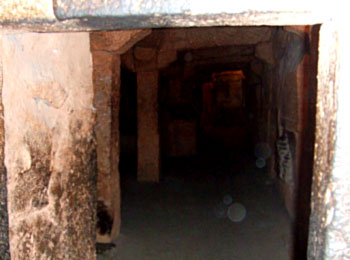

Kaliadeh Palace is a classic example of Persian architecture, situated on the banks of the Shipra, the island-like site immediately conjures up the natural beauty of ancient Ujjain which poets down the ages have waxed lyrical. The glorious landscape of the flowing river on both sides of the palace and the man-made tanks and channels, with water gurgling through them, provide a spectacular backdrop to the imposing building. Two Persian inscriptions found in one of the long corridors of the palace record the visits of Emperor Akbar and Jehangir to this palace. The palace was broken down in the time of the Pindaris and was restored by Madhav Rao Scindia in 1920 to its present glory. The Sun Temple was also restored by the family.



Durgadas ki Chhatri is a distinctive monument that glows like a small jewel in the surrounding lush landscape. Vir Durgadas earned a secure niche for himself in the history of Marwad by his undaunting, selfless service to the State. He fought for the independence of Jodhpur after the death of Maharaj Jaswant Singh and helped Ajit Singh to ascend the throne against the wishes of Aurangzeb. Durgadas died at Rampura in 1718, and his funeral rites were performed according to his wishes on the banks of the Shipra. The rulers of Jodhpur had built the chhatri to consecrate his memory. This beautiful structure, built in the Rajpur style of architecture, houses a statue of Durgadas which crumbled down.
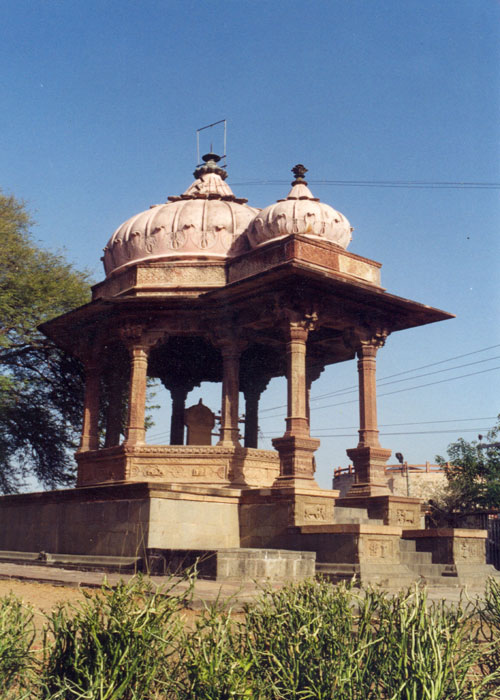
The Harsiddhi Temple occupies a special place in the galaxy of ancient sacred spots of Ujjain. Seated between the idols of Mahalaxmi and Mahasaraswati, the idol of Annapurna is painted in dark vermilion color The Sri Yantra, the symbol of power or shakti, is also enshrined in the temple. According to the Shiva Purana, when Shiva carried away the burning body of Sati from the sacrificial fire, her elbow dropped at this place. There is an interesting legend in the Skanda Purana about the manner in which the Goddess Chandi acquired the epithet of Harsiddhi. Once when Shiva and Parvati were alone on Mount Kailash, two demons called Chand and Prachand tried to force their way in. Shiva called upon Chandi to destroy them which she did. Pleased, Shiva bestowed upon her the epithet of 'one who vanquishes all'. The temple was reconstructed during the Maratha period and the two pillars adorned with lamps are special features of Maratha art. These lamps, lit during Navaratri, present a glorious spectacle. There is an ancient well on the premises, and an artistic pillar adorns the top of it.


Siddhavat is an enormous banyan tree on the banks of the Shipra, has been vested with religious sanctity as the Akashyavat in Prayag and Gaya, Vanshivat of Vrindavan and the Panchavata of Nasik. Thousands of pilgrims take a dip in the Shipra from the bathing ghat built here. According to one tradition, Parvati is believed to have performed her penance here. It used to be a place of worship for the followers of Natha sect. One legend has it that some Mughal rulers had cut off the Banyan tree and covered the site with iron sheets to prevent its roots from growing. But the tree pierced the iron sheets and grew and flourished. The little village of Bhairogarh near Siddhavat is famous for its tie and dye painting for centuries. In ancient times when trade with other countries flourished, exquisitely printed cloth from Bhairogarh used to find its way to Rome and China.
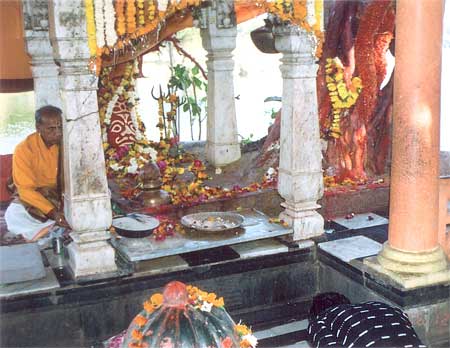
The most important among the eight bhairavas of the Shaivites is Kal Bhairava, which has been built under the benefaction of King Bhadresen, on the bank of River Shipra at Ujjain. A mention of Kal Bhairava is found in the Avanti Khanda of the Skanda Purana.Worship of Kal Bhairava is believed to have been a part of the Kapalika and Aghora sects. Ujjain was a prominent centre of these two sects. Even today, liquor is offered as a part of the ritual to Kal Bhairava Beautiful paintings in the Malwa style once decorated the temple walls, only traces of which are visible.


Sandipani Ashram: According to the sources of Mahabharata, Lord Krishna and Sudama used to receive regular instruction in the Sandipani Ashram in Ujjain. Beside political and religious significance, Ujjain also enjoys considerable recognition of being a notable seat of learning. The area nearby the ashram is known as Ankapata, which is believed to be the place, where Lord Krishna used to wash his writing tablet. stone has also been discovered at the place, featuring numerals 1 to 100, which is believed to have been inscribed by Guru Sandipani. The Gomti Kunda, the mention of which is found in the Puranas was the source of water supply to the ashram during ancient times. The disciples of Vallabha sect consider this place as the 73rd sect of the 84 seats of Vallabhacharya, where he delivered his speeches across India.





Gadkalika- the deity in this temple is believed to have been worshipped by Kalidasa. The legend goes that Kalidasa was an uneducated person and it was due to his dedication to Goddess Kalika that he earned her blessings and also acquired unparalleled literary skills. Emperor Harshavardhan had this temple renovated in the 7th century AD. There is further evidence of renovation during the Paramara period. The temple has been rebuilt in the modern times by the erstwhile Gwalior State.


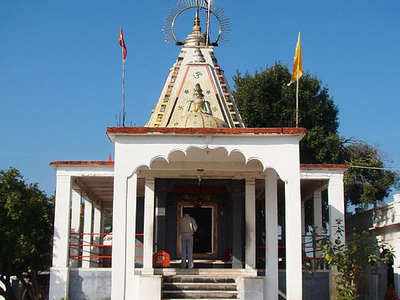

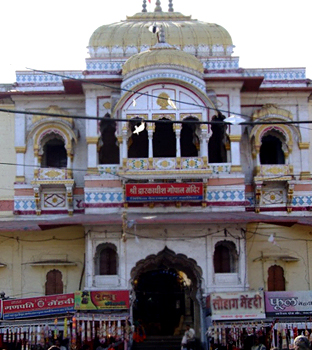
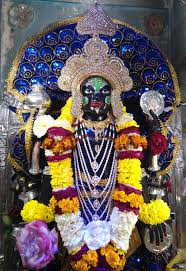
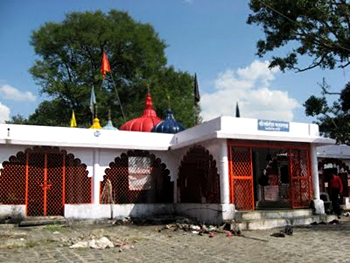






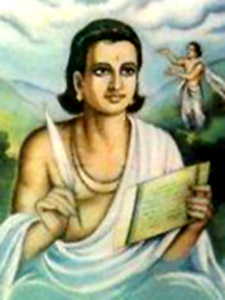



Avantika, Padmavati, Haranyavati, Kandakatringa, Kumudvati, Pratikalpa, Ujjayani, Udeni, Kushasthali, Bhagavati and Vishala.
How to reach here:
By Air: Devi Ahilyabai Holkar Airport in Indore is the nearest airport to Ujjain, which is situated 55 km away. Indore is air connected to major cities in India by public and private domestic airlines
By Rail: Ujjain Junction Railway Station is an important railway station in Western railway zone. It is well connected to all major railway stations in India.
Best time to visit: October to March.
Languages spoken: Hindi, English.
Must eat: Condensed Hot Almond Milk, Gulab Jamuns,Chakki ki Shaak .
Famous Restaurants: Sri Ganga, Status Hotel Imperial.
Places you must visit:
The Mahakaleshwar Temple is the most famous temple in the city of Ujjain. This temple of Lord Shiva is devoted to one of the twelve ‘Jyotirlingas’ in India. The temple is built in five levels and decorated with idols of deities like Omkareshwars Shiva, Parvati, Ganesh, Kartikeya and Shiva’s Bull – Nandi. The temple also has a towering ‘shikhara’.Its shikhara soaring into the skies, evokes primordial awe and reverence with its majesty. The Mahakal dominates the life of the city and its people, even in the midst of the busy routine of modern preoccupations, and provides an unbreakable link with past traditions. Bhasm Arti, one of the important ritual of this temple is a symbolic representation of Death and Life. This unusual sacrament that involves smearing the linga with hot ashes from the burning ghats is a mark of respect the Destroyer of the universe, Lord Shiva.
Mahakalam Lavanyam Madhura Karunarasa varithim |
Mahalingam Mangalaroopam Jyothir swaroopam sirasa namami||



Bade Ganeshji ka Mandir, an ancient temple located above the tank adjacent to the Mahakaleswar temple,enshrines a huge artistic sculpture of Ganesh, the son of Shiva. An idol of this size and beauty is rarely to be found.The center of the temple has an idol of the pancha-mukhi (five faced) Hanuman. There is also provision for learning astrology and Sanskrit in the temple.

The ancient temple of Chintaman Ganesh is built across the Shipra on the Fatehabad railway line. The Ganesh idol enshrined here is supposed to be swayambhu - born of itself. The temple itself is believed to be of considerable antiquity. Riddhi and Siddhi, the consorts of Ganesha, are seated on either side of Ganesha. The artistically carved pillars in the assembly hall date back to the Paramara period. Worshippers throng to this temple because the deity here is traditionally known as Chintaharan Ganesh meaning "the assurer of freedom from worldly anxieties".


Pir Matsyendranath is an extremely attractive spot on the banks of the Shipra quite close to the Bhartihari Caves and the Gadkalika Temple. It is dedicated to the memory of one of the great leaders of the Natha sect of Saivism-Matsyendranath. Since muslims as well as the followers of the Natha sect call their saints 'pir', the ancient site of Pir Matsyendranath is venerated by both. Excavations at this site have yielded some antiquities which date back to the 6th and 7th century BC.

The Bhartrihari Caves are situated on the bank of River Shipra, adjacent to the temple of Gadkalika. There is a traditional belief that at this very spot, Bhartrihari, who is known as the stepbrother of Vikramaditya, lived and meditated before forsaking worldly pleasures. He was also a great poet and scholar. Some of his famous works are Shringarshatak, Vairagyashatak, and Nitishatak.


Kaliadeh Palace is a classic example of Persian architecture, situated on the banks of the Shipra, the island-like site immediately conjures up the natural beauty of ancient Ujjain which poets down the ages have waxed lyrical. The glorious landscape of the flowing river on both sides of the palace and the man-made tanks and channels, with water gurgling through them, provide a spectacular backdrop to the imposing building. Two Persian inscriptions found in one of the long corridors of the palace record the visits of Emperor Akbar and Jehangir to this palace. The palace was broken down in the time of the Pindaris and was restored by Madhav Rao Scindia in 1920 to its present glory. The Sun Temple was also restored by the family.



Durgadas ki Chhatri is a distinctive monument that glows like a small jewel in the surrounding lush landscape. Vir Durgadas earned a secure niche for himself in the history of Marwad by his undaunting, selfless service to the State. He fought for the independence of Jodhpur after the death of Maharaj Jaswant Singh and helped Ajit Singh to ascend the throne against the wishes of Aurangzeb. Durgadas died at Rampura in 1718, and his funeral rites were performed according to his wishes on the banks of the Shipra. The rulers of Jodhpur had built the chhatri to consecrate his memory. This beautiful structure, built in the Rajpur style of architecture, houses a statue of Durgadas which crumbled down.

The Harsiddhi Temple occupies a special place in the galaxy of ancient sacred spots of Ujjain. Seated between the idols of Mahalaxmi and Mahasaraswati, the idol of Annapurna is painted in dark vermilion color The Sri Yantra, the symbol of power or shakti, is also enshrined in the temple. According to the Shiva Purana, when Shiva carried away the burning body of Sati from the sacrificial fire, her elbow dropped at this place. There is an interesting legend in the Skanda Purana about the manner in which the Goddess Chandi acquired the epithet of Harsiddhi. Once when Shiva and Parvati were alone on Mount Kailash, two demons called Chand and Prachand tried to force their way in. Shiva called upon Chandi to destroy them which she did. Pleased, Shiva bestowed upon her the epithet of 'one who vanquishes all'. The temple was reconstructed during the Maratha period and the two pillars adorned with lamps are special features of Maratha art. These lamps, lit during Navaratri, present a glorious spectacle. There is an ancient well on the premises, and an artistic pillar adorns the top of it.
Siddhavat is an enormous banyan tree on the banks of the Shipra, has been vested with religious sanctity as the Akashyavat in Prayag and Gaya, Vanshivat of Vrindavan and the Panchavata of Nasik. Thousands of pilgrims take a dip in the Shipra from the bathing ghat built here. According to one tradition, Parvati is believed to have performed her penance here. It used to be a place of worship for the followers of Natha sect. One legend has it that some Mughal rulers had cut off the Banyan tree and covered the site with iron sheets to prevent its roots from growing. But the tree pierced the iron sheets and grew and flourished. The little village of Bhairogarh near Siddhavat is famous for its tie and dye painting for centuries. In ancient times when trade with other countries flourished, exquisitely printed cloth from Bhairogarh used to find its way to Rome and China.

The most important among the eight bhairavas of the Shaivites is Kal Bhairava, which has been built under the benefaction of King Bhadresen, on the bank of River Shipra at Ujjain. A mention of Kal Bhairava is found in the Avanti Khanda of the Skanda Purana.Worship of Kal Bhairava is believed to have been a part of the Kapalika and Aghora sects. Ujjain was a prominent centre of these two sects. Even today, liquor is offered as a part of the ritual to Kal Bhairava Beautiful paintings in the Malwa style once decorated the temple walls, only traces of which are visible.


Sandipani Ashram: According to the sources of Mahabharata, Lord Krishna and Sudama used to receive regular instruction in the Sandipani Ashram in Ujjain. Beside political and religious significance, Ujjain also enjoys considerable recognition of being a notable seat of learning. The area nearby the ashram is known as Ankapata, which is believed to be the place, where Lord Krishna used to wash his writing tablet. stone has also been discovered at the place, featuring numerals 1 to 100, which is believed to have been inscribed by Guru Sandipani. The Gomti Kunda, the mention of which is found in the Puranas was the source of water supply to the ashram during ancient times. The disciples of Vallabha sect consider this place as the 73rd sect of the 84 seats of Vallabhacharya, where he delivered his speeches across India.





Gadkalika- the deity in this temple is believed to have been worshipped by Kalidasa. The legend goes that Kalidasa was an uneducated person and it was due to his dedication to Goddess Kalika that he earned her blessings and also acquired unparalleled literary skills. Emperor Harshavardhan had this temple renovated in the 7th century AD. There is further evidence of renovation during the Paramara period. The temple has been rebuilt in the modern times by the erstwhile Gwalior State.


Mangalnath temple is situated away from the bustle of the city and can be reached through a winding road. The temple looks upon a vast expanse of the Shipra waters and fills the onlooker with an indescribable sense of peace. Mangalnath is regarded as the birth place of Mars, according to the Matsya Purana. In ancient times, it was famous for a clear view of the planet and hence suitable for astronomical studies. Mahadev or Shiva is the deity which is worshiped in the temple of Mangalnath.


The Gopal Mandir is situated in the middle of the big market square. It was constructed by Bayajibai Shinde, the queen of Maharajah Daulat Rao Shinde in the 19th century. It is a beautiful example of Maratha architecture. The sanctum sanctorum is inlaid with marble and doors are silver plated. The door in the inner sanctum is said to have been carried to Ghazni from the Somnath temple and from there by Mahmud Shah Abdali to Lahore. Mahadji Scindia recovered it and now it has been installed in this temple.

Navagraha Mandir is situated on the Triveni Ghat of the Shipra, the temple is located away from the old site of Ujjaini town. It is dedicated to the nine planets, attracts large crowds on new moon days falling on Saturdays. Its religious importance has increased in recent years though there is no known reference to it in the ancient texts.


Raja Jai Singh, who was a great scholar, built the Vedha Shala observatory in Ujjain in1686. He efficiently translated works of Ptolemy and Euclid into Sanskrit from Arabic. He also built many other observatories in several places like Delhi, Jaipur, Varanasi and Mathura.Ujjain enjoyed a position of considerable importance in the field of astronomy. Great works on astronomy such as the Surya Siddhanta and the Panch Siddhanta were written in Ujjain. According to Indian astronomers, the Tropic of Cancer is supposed to pass through Ujjain. It is also the fist meridian of longitude of the Hindu geographers. From about the 4th century BC, Ujjain enjoyed the reputation of being India's Greenwich.Astronomical studies are conducted through the Department of Education and the ephemeris is published every year. There is a small planetarium and a telescope to observe the moon, Mars, Jupiter and their satellites. The observatory is also used for weather forecasts.

The Vikram Kirti Mandir, established on the event of the second millennium of the Vikram era as a cultural hub to honor the memory of Vikramaditya, houses the Scindia Oriental Research Institute, an art gallery, an archaeological museum and an auditorium.The Scindia Oriental Research Institute has an invaluable collection of 18,000 manuscripts on various subjects and runs a reference library of important oriental publications. Rare manuscripts in Prakrit, Arabic, Persian and other Indian languages cover a wide range of subjects from Vedic literature and philosophy to dance and music. Palm leaf and bark leaf (Bhurja Patra) manuscripts are also preserved in this institute. Apart from an illustrated manuscript of Shrimad Bhagavata in which actual gold and silver have been employed for the paintings, the Institute has a rich collection of old paintings in the Rajput and Mughal style. The museum also exhibits a rich array of images, inscriptions, copper plates and fossils discovered in the Narmada valley. A huge skull of a primitive elephant is of special interest. Vikram University: A famous centre of learning in the past, Ujjain continues to uphold that tradition. The establishment of the Vikram University in 1957 was an important landmark. Situated on the Dewas Road, this university plays a significant role in the literary and cultural activities of the city.


The Kalidasa Academy was established in Ujjain by the Government of Madhya Pradesh in memory of the renowned poet and dramatist, Kalidasa. This academy emphasises the study and research of Sanskrit. The premises of the academy consist of a museum, theatre, library, seminar and lecture halls, research facilities for scholars and a large open-air theater.



Vikram University is an important landmark of Ujjain , a popular center of learning in the city. The University, located on Dewas Road, was established in the year 1957. It plays a significant role in the literary and cultural activities of the city.


Genuinely informative post allocated by you. There is no denying that this article might benefit a greater part of blog readers, especially who love travelling. Also, for people who love travelling to new places, English is a must have skill as it is known to more than a billion of people worldwide. Keep updating this compelling content.
ReplyDeleteEnglish practice App | English speaking app